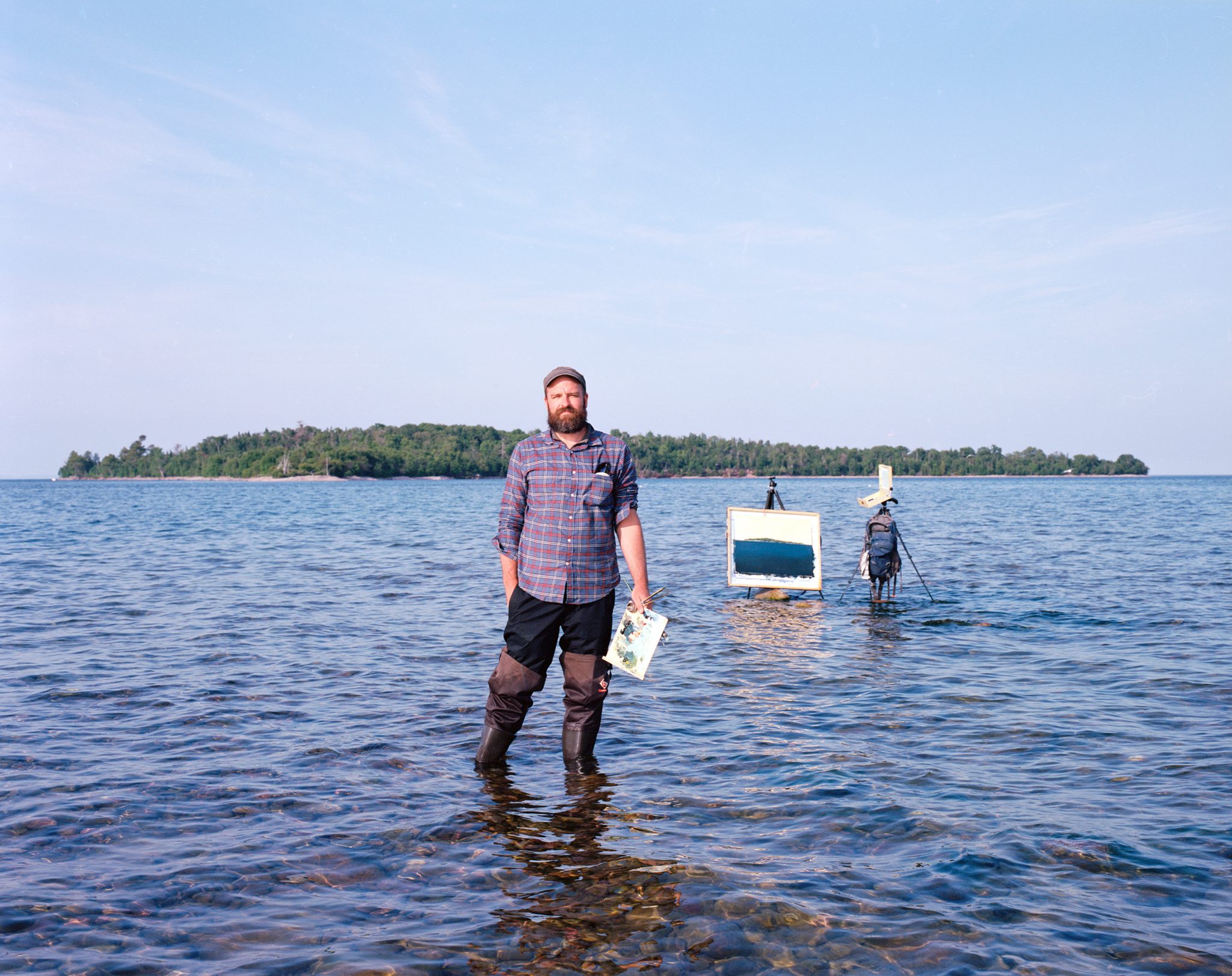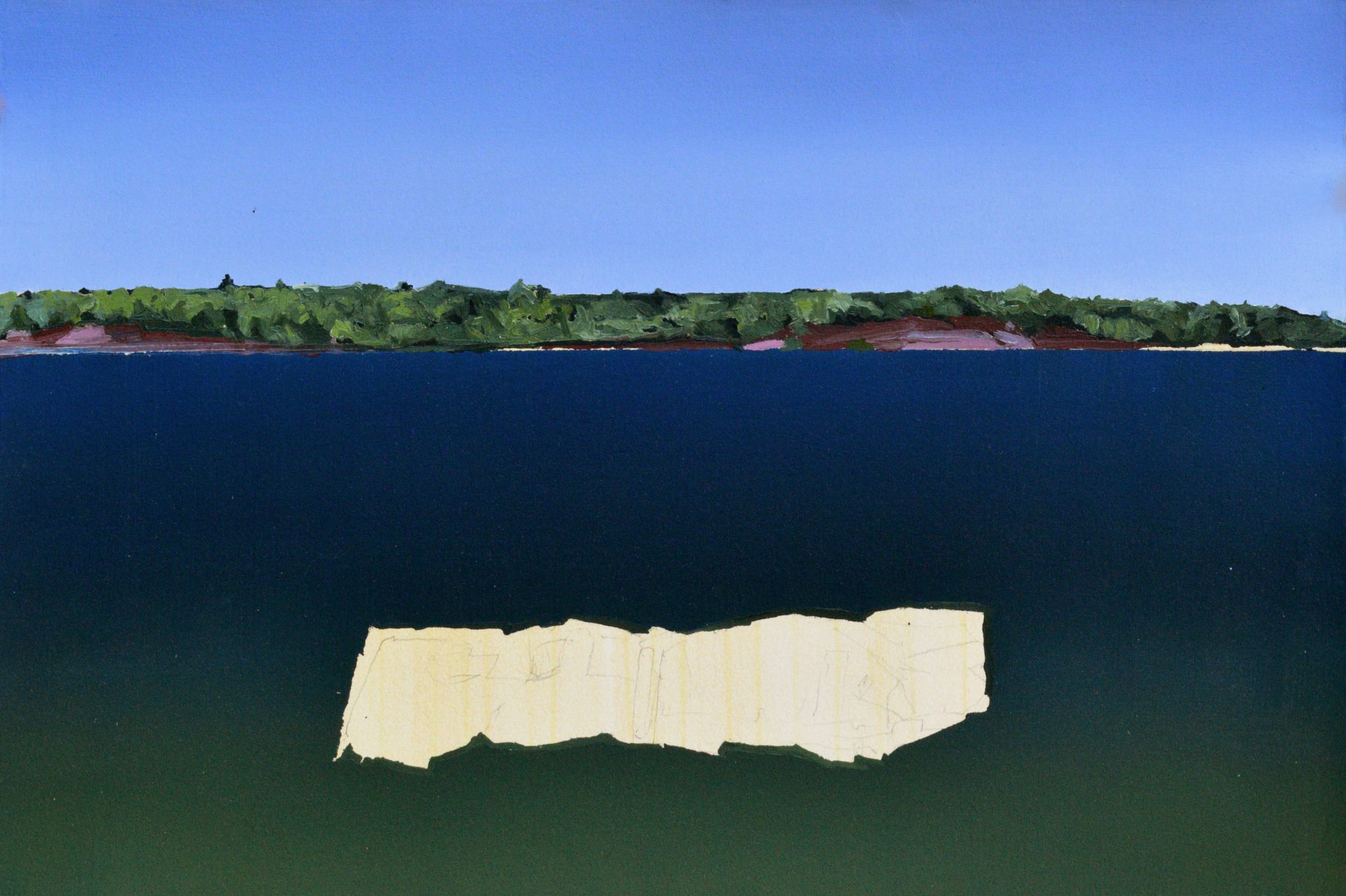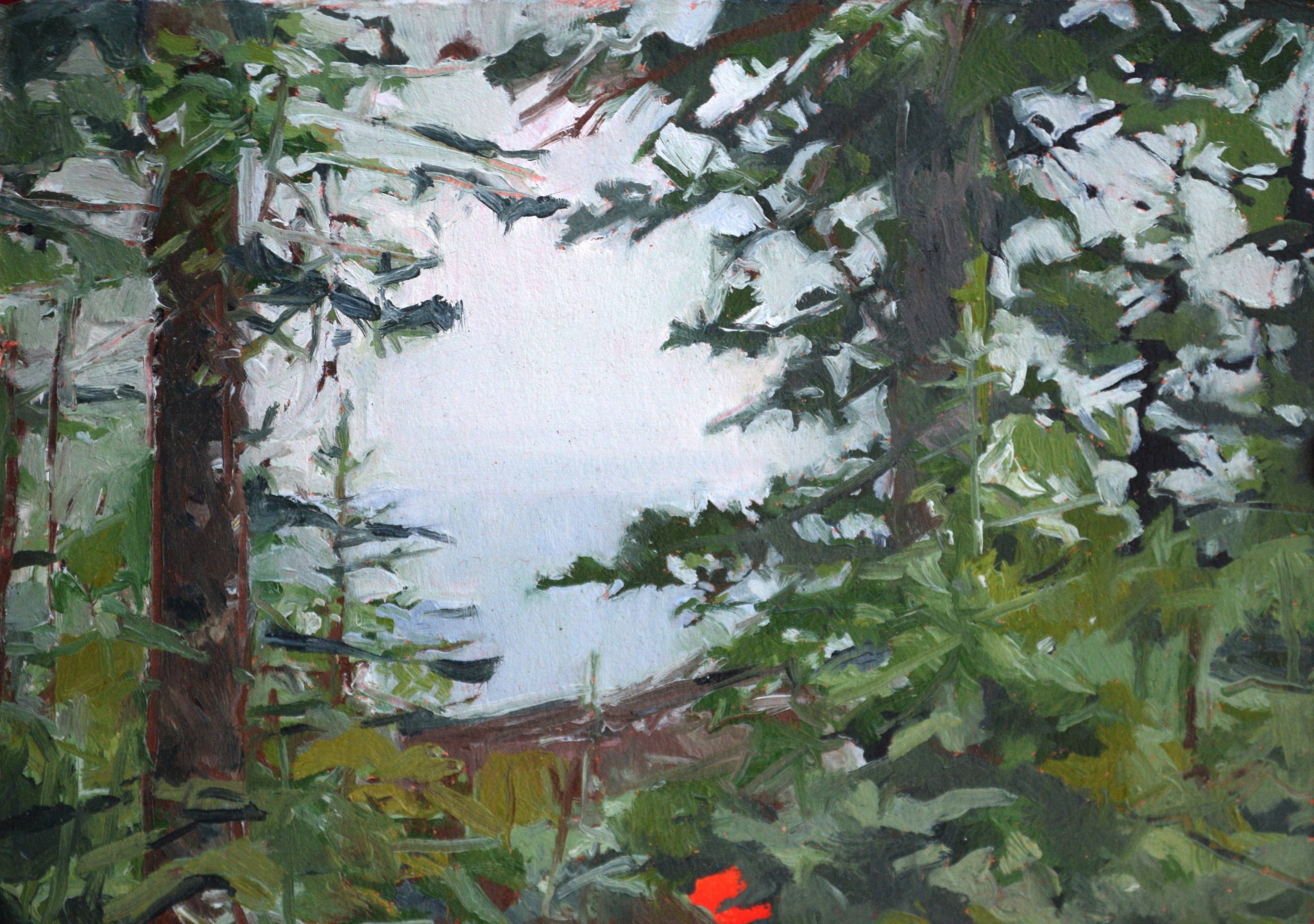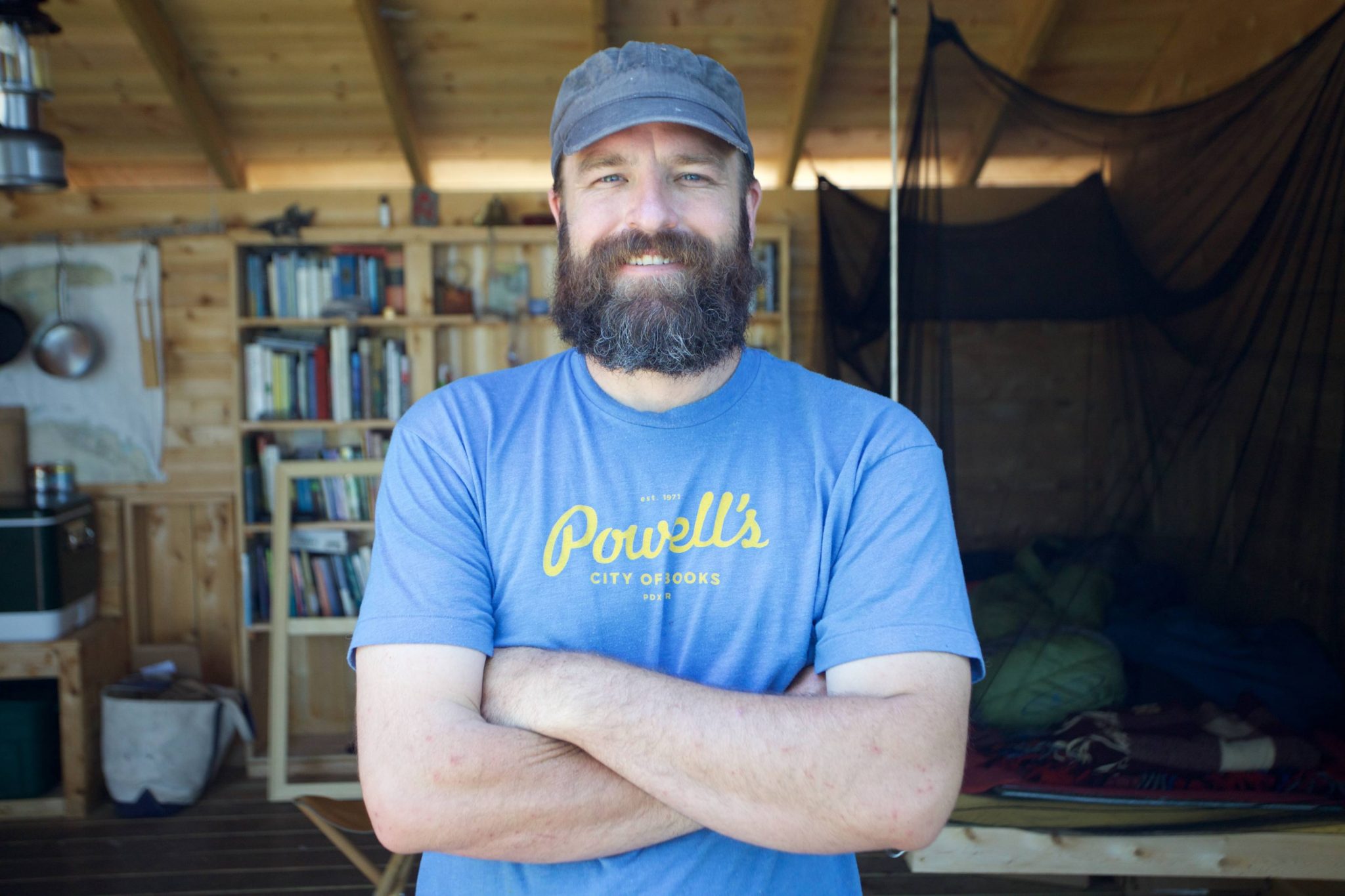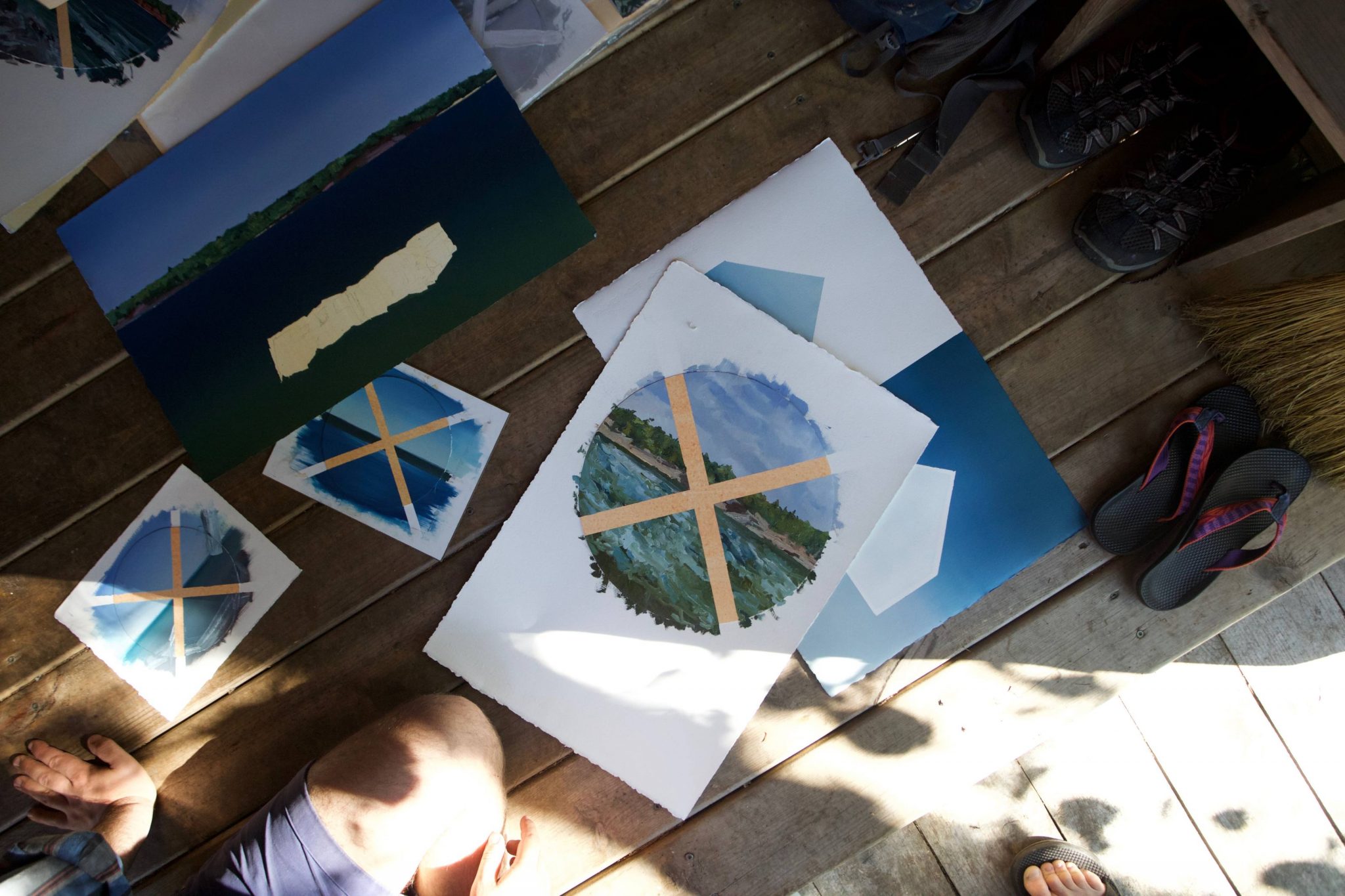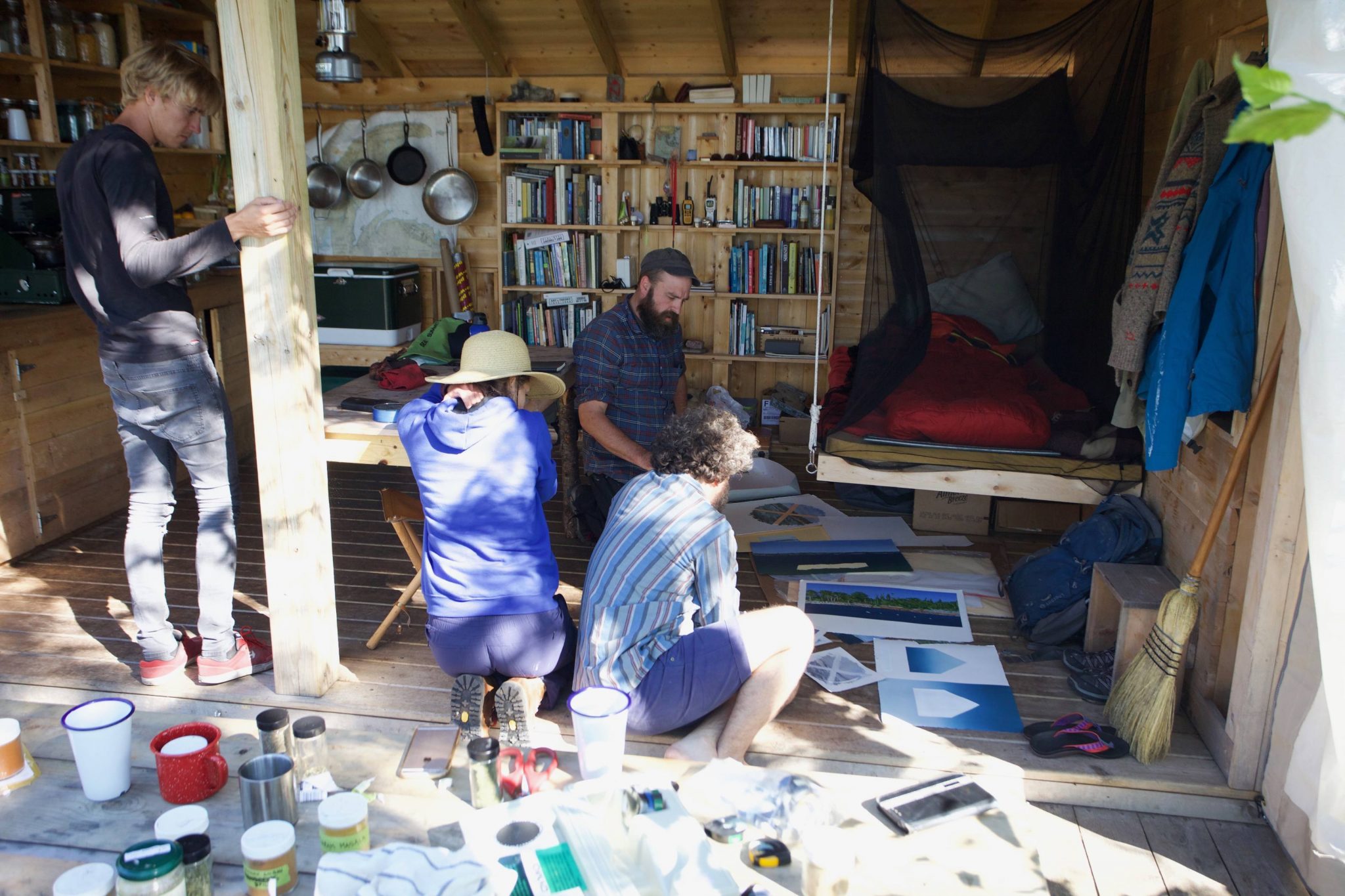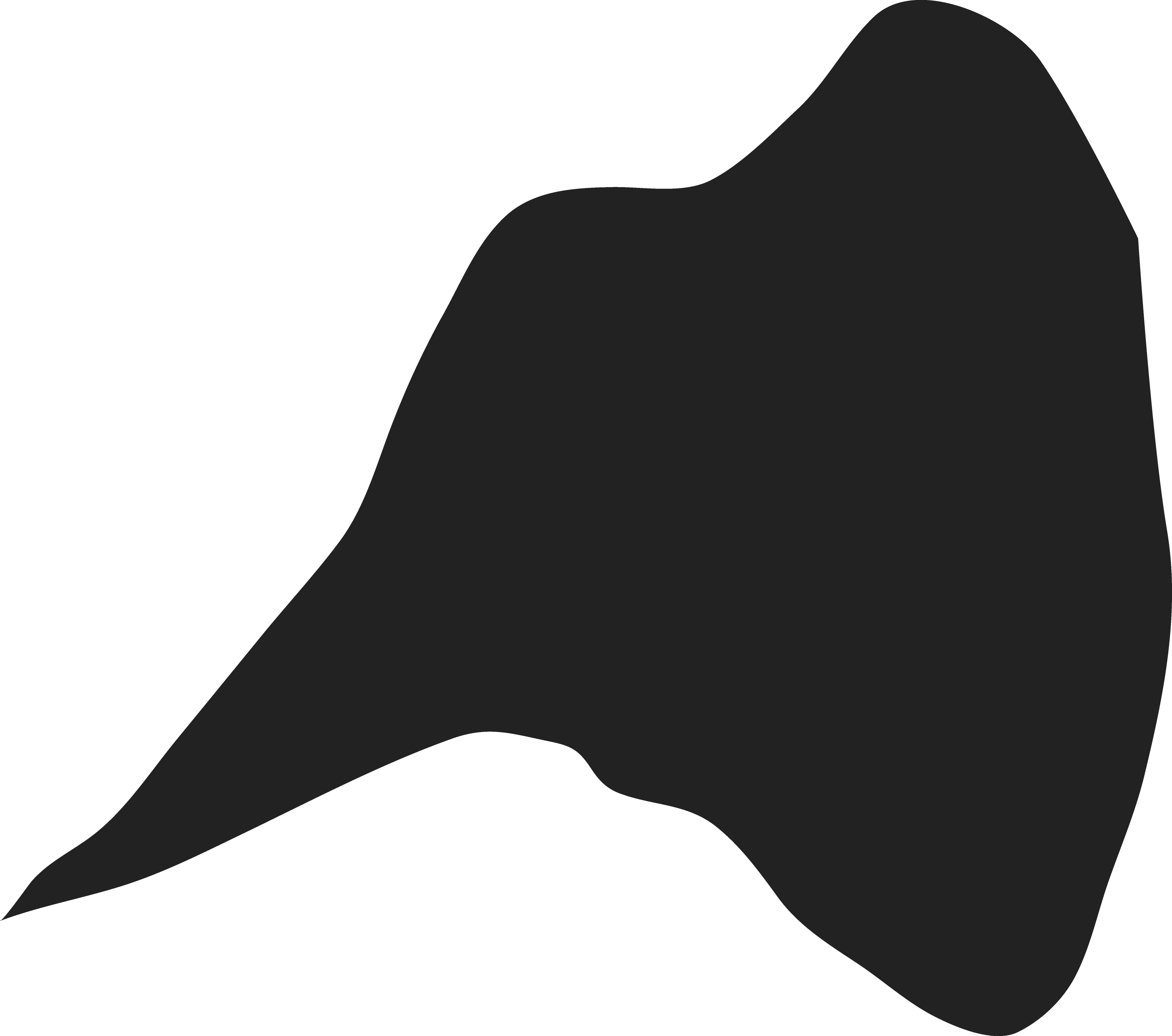In the summer of 2015 I spent 3 weeks as a resident artist on Rabbit Island, a 91 acre island in the Lake Superior. During the bulk of that time I was the island’s only human inhabitant. I had planned to continue research on coastal profiling and it’s effects on the construction of landscape paintings. However, extended periods of solitude can erode even the best laid plans. As is often the case the primacy of experience overwhelms the mutability of preconceived notions. From the shore, from the trees and from a tiny raft I was able to make a dozen or so oil paintings. These works and the starts of ideas in them became the subject of the following years studio canvases.
Lake Superior feels immensely deep. It also, depending on the weather and the craft you have to navigate it, feels like an insurmountable barrier. In the cliff paintings I raised the horizon line and eliminated surface detail to create a kind of wall/void. Rabbit Island doesn’t have the huge rocky cliffs seen in many of the studio paintings. The island is rocky, but I took certain liberties with scale and surface that better fit with the psychological and philosophical ideas experienced. Standing on those cliffs one is staring into an impenetrable abyss. Other works look at that tiny space between shore and open water by subtly examining views from each position. In them I was reminded of a favorite quote from the 1975 movie Jaws, “It’s only an island if you look at it from the water”. They are reminders that our labels for things are dependent on our vantage points. Together all these works synthesize my experience on Rabbit Island.
At the heart of my works lies the central idea that all our experiences of landscape are culturally created. How we interact with spaces is informed by how we are taught to see them. I work with landscape painting, a decidedly un-contemporary genre that is often easily dismissed by a more critical crowd. On top of that I choose to deal with it sincerely, a double blow against initial readings of my work. However it is the difficulty of the subject that ultimately attracts me to it. Its spatial language is accessible, subtle and essential when it comes to how we choose to deal with issues like conservation, wilderness and development.
Coastal surveying/profiling has long played an important part in my work. First employed by the Portuguese and then the Dutch in the 14th-17th century these navigational profiles ultimately played a huge role in how modern landscape came to be spatially structured. This structure while fully absorbed into the cliché of modern landscape painting is not innocuous. It is rooted in a history of globalism and environmental dominance. As someone who resides in a land locked desert exploring this structure is difficult, as it historically requires a coast. Rabbit Island with the aide of the small boat provided is perfect to continue this research in how we came to see and structure our pictures this way. I also enjoy the idea of surveying an island, not for navigational purposes related to commerce, but to “rediscover” a wild place that has been excluded from development.
Working in the field creates variables that cannot be created the studio. Painting with mittens on in -15 degrees and having to make and mix your paints with walnut oil so they don’t freeze creates marks that are reflective of a situation in a way a photograph isn’t. You can tell when a painting was painted in 45 mph winds because of the dust stuck in it. You make different decisions when you are tired, hungry and exposed. These field paintings come back to the studio and result in larger finished works that reflect observations and ideas obtained in the field.
